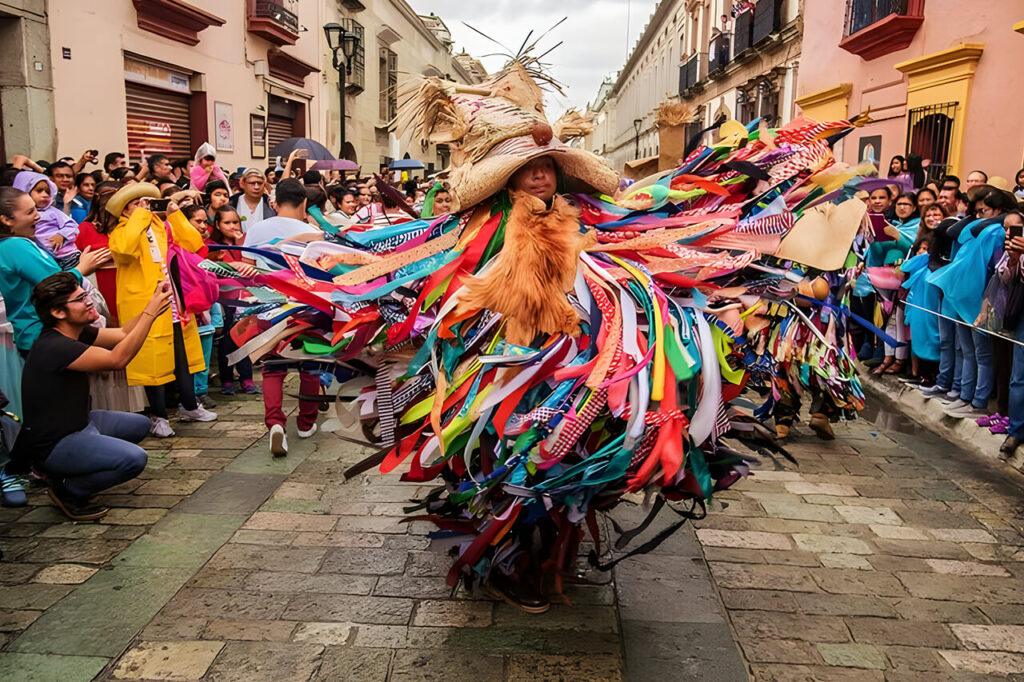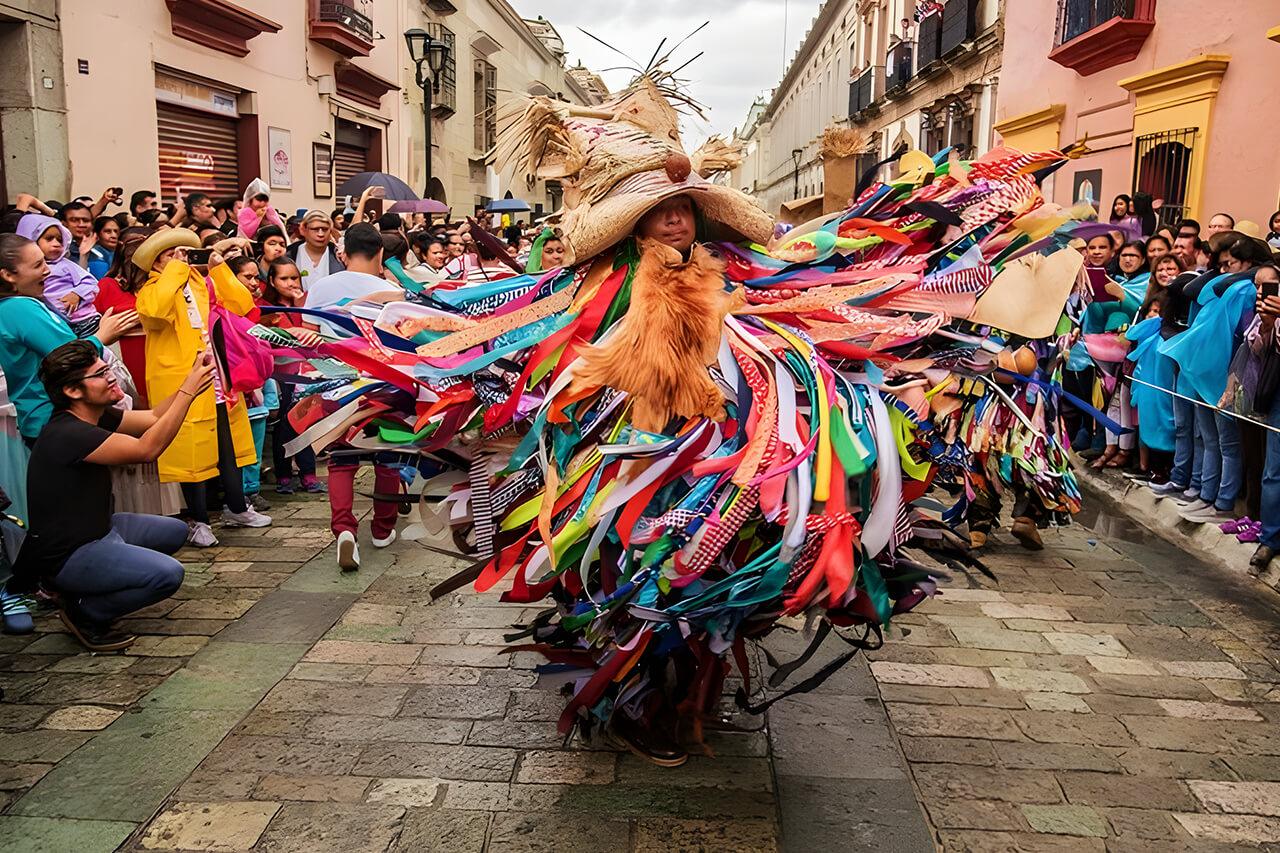Oaxaca is a land of living traditions, where culture is expressed through its gastronomy, music, dances, and festivities. One of the most peculiar and colorful is that of the Tiliches of Putla, characters who burst forth with energy and joy during the Putla de Guerrero Carnival in Oaxaca.
Who Are the Tiliches?
The Tiliches are iconic figures of the Putla Carnival. They are known for their outfits made of old, worn clothing—often patched and in vibrant colors. They wear hand-carved wooden masks with exaggerated expressions and large hats decorated with ribbons and feathers.
These characters roam the streets jumping, dancing, and spreading joy to the crowds. Their presence symbolizes chaos and the breaking of norms before Lent, a time of reflection in the Catholic tradition.
The Origin and Meaning of the Tiliches
The origin of the Tiliches dates back to pre-Hispanic times, when the Mixtec peoples performed dances to ward off evil spirits and attract good harvests. With the arrival of the Spanish and the blending of cultures, this practice transformed into the Carnival celebration.
Today, the Tiliches represent the figure of the “old man” or “wise one,” someone who returns from the beyond to remind new generations of the importance of joy, community, and cultural resilience.
A Tradition That Endures
The Putla Carnival is not just a party; it is a manifestation of identity and belonging. With every leap and every laugh from the Tiliches, one of Oaxaca’s most vibrant traditions stays alive.
If you ever have the chance to visit Putla de Guerrero during Carnival, don’t hesitate to join the celebration. The energy of the Tiliches will captivate you and make you part of one of Mexico’s most authentic festivals.




